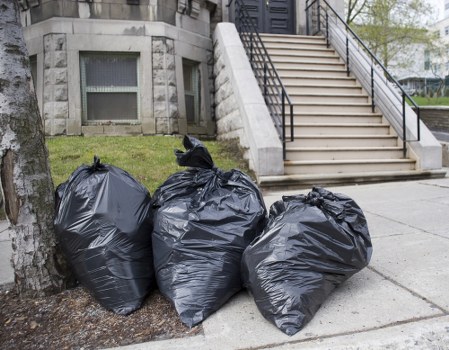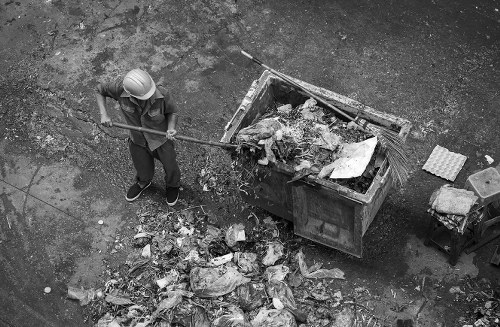Skip Permits in Richmond: Your Comprehensive Guide
Understanding Skip Permits

Are you planning a renovation or a major cleanup project in Richmond? Whether you're clearing out your garage or managing a construction site, you might need a skip permit. Skip permits are essential for ensuring that waste management is handled responsibly and in compliance with local regulations.
Skip permits allow you to place a skip, or large waste container, on public or private property. This facilitates the efficient disposal of large amounts of waste, reducing the environmental impact and keeping your project site organized.
Without a skip permit, you risk fines and legal issues. Understanding the requirements and process for obtaining a skip permit in Richmond is crucial for any project involving significant waste disposal.
Why You Need a Skip Permit in Richmond

Obtaining a skip permit ensures that your waste disposal practices adhere to Richmond's local laws and environmental standards. It helps in maintaining public spaces free from debris and prevents unauthorized dumping, which can lead to pollution and other environmental hazards.
Moreover, having a skip permit demonstrates your commitment to responsible waste management. It can enhance your reputation, whether you're a homeowner, a contractor, or a business owner, by showing that you prioritize cleanliness and sustainability.
Additionally, skip permits can provide access to designated waste disposal areas, ensuring that your waste is collected and processed appropriately. This can save you time and resources, as well as prevent potential delays in your project due to improper waste handling.
The Application Process

Applying for a skip permit in Richmond involves several steps. First, you need to determine the type and size of skip you require based on the volume and nature of your waste.
Next, fill out the application form, which typically requires details about the location, duration, and purpose of the skip placement. Make sure to provide accurate information to avoid delays or rejections.
Once submitted, the local authorities will review your application. This may involve a site inspection to ensure that the proposed skip placement complies with zoning laws and safety regulations.
Required Documentation

When applying for a skip permit, you'll need to provide several documents. These often include proof of ownership or authorization to use the property where the skip will be placed, such as a property deed or a lease agreement.
You may also need to submit a detailed site plan illustrating where the skip will be placed and how it will be accessed. This helps authorities assess any potential impact on traffic flow, pedestrian safety, and public spaces.
Additionally, some applications require a waste management plan outlining how you intend to dispose of the waste. This ensures that the waste will be handled responsibly and in accordance with environmental regulations.
Local Laws and Restrictions

Richmond has specific regulations governing the placement and use of skips. These laws are designed to protect the community and the environment. It's important to familiarize yourself with these regulations to ensure compliance.
For instance, there may be restrictions on the size and type of skips allowed in certain areas. Some zones may prohibit skip placement during specific hours to minimize disruption to residents and businesses.
Violating these regulations can result in hefty fines and the removal of your skip at your expense. Therefore, it's essential to adhere to all local laws and guidelines when applying for and using a skip permit in Richmond.
How to Obtain a Skip Permit in Richmond
Securing a skip permit in Richmond is a straightforward process if you follow the necessary steps and provide all required information. Start by assessing your waste disposal needs and selecting the appropriate skip size. Next, complete the application form accurately and gather all necessary documentation.
Submit your application to the Richmond local authorities, and be prepared for a possible site inspection. Once approved, you'll receive your skip permit, allowing you to place the skip in your designated location for the specified duration.
Remember to monitor the skip usage and ensure that you do not exceed the allowed waste capacity or duration. Compliance with the permit terms is crucial for maintaining good standing with local regulations.
Tips for Managing Your Waste with a Skip Permit
Efficient waste management is key to any successful project involving skip permits. Here are some tips to help you manage your waste effectively:
- Sort Your Waste: Separate recyclable materials from general waste to reduce the amount of waste going into the skip.
- Avoid Contaminants: Do not dispose of hazardous or prohibited materials in the skip, as this can lead to fines and environmental harm.
- Maximize Space: Break down large items to make better use of the skip's capacity.
- Monitor Fill Levels: Regularly check how full the skip is to avoid overfilling and potential additional charges.
- Plan Ahead: Schedule waste disposal in phases to maintain a manageable flow of waste into the skip.
Implementing these strategies can help you stay within the permit's guidelines, minimize costs, and contribute to a cleaner, more organized project site.
For personalized assistance and to ensure a smooth application process, contact us today. Our team of experts is ready to help you secure the necessary skip permit and manage your waste efficiently.